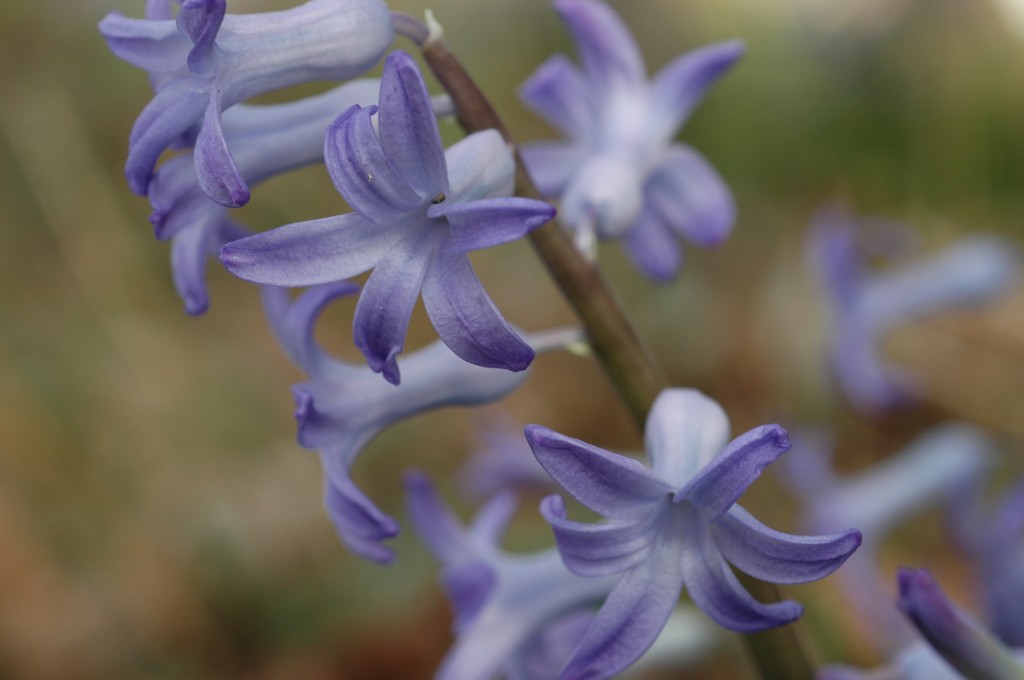 Let’s talk about fickle fashion. Let’s discuss our hunger for big and beefy. and then let’s mourn the slipping away of Hyacinth ‘Blue Festival’. Maybe I’m the only one left on earth that prefers loose, multi-stemmed hyacinths that hold their flowers neatly upright rather than the hefty, bulky, hubba-hubba hyacinths with foxtail fat flowers that don’t perennialize well and topple over due to the dead weight of their cotton candy-like flower blobs. But I suspect that the reason why the Festival series (there was white and pink as well as blue) didn’t sell well was because no one knew it existed.
Let’s talk about fickle fashion. Let’s discuss our hunger for big and beefy. and then let’s mourn the slipping away of Hyacinth ‘Blue Festival’. Maybe I’m the only one left on earth that prefers loose, multi-stemmed hyacinths that hold their flowers neatly upright rather than the hefty, bulky, hubba-hubba hyacinths with foxtail fat flowers that don’t perennialize well and topple over due to the dead weight of their cotton candy-like flower blobs. But I suspect that the reason why the Festival series (there was white and pink as well as blue) didn’t sell well was because no one knew it existed.
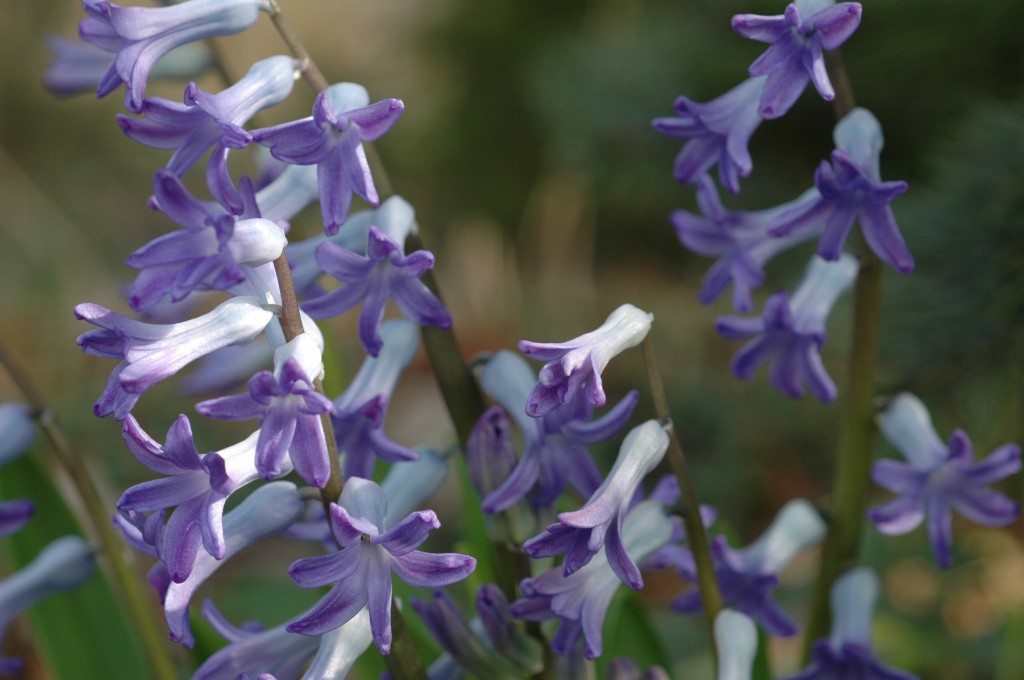 So here I am, trying to drum up a fan club for a hyacinth that only seems to still be offered by White Flower Farm (www.whiteflowerfarm.com) and no one else (if you know otherwise, clue me in). Because, in the cheerleading department, I’m in the front lines. Two years ago, I installed Hyacinth ‘Blue Festival’ on a banking by the road — a berm that possesses quite possibly the world’s worst soil and driest conditions.
So here I am, trying to drum up a fan club for a hyacinth that only seems to still be offered by White Flower Farm (www.whiteflowerfarm.com) and no one else (if you know otherwise, clue me in). Because, in the cheerleading department, I’m in the front lines. Two years ago, I installed Hyacinth ‘Blue Festival’ on a banking by the road — a berm that possesses quite possibly the world’s worst soil and driest conditions.
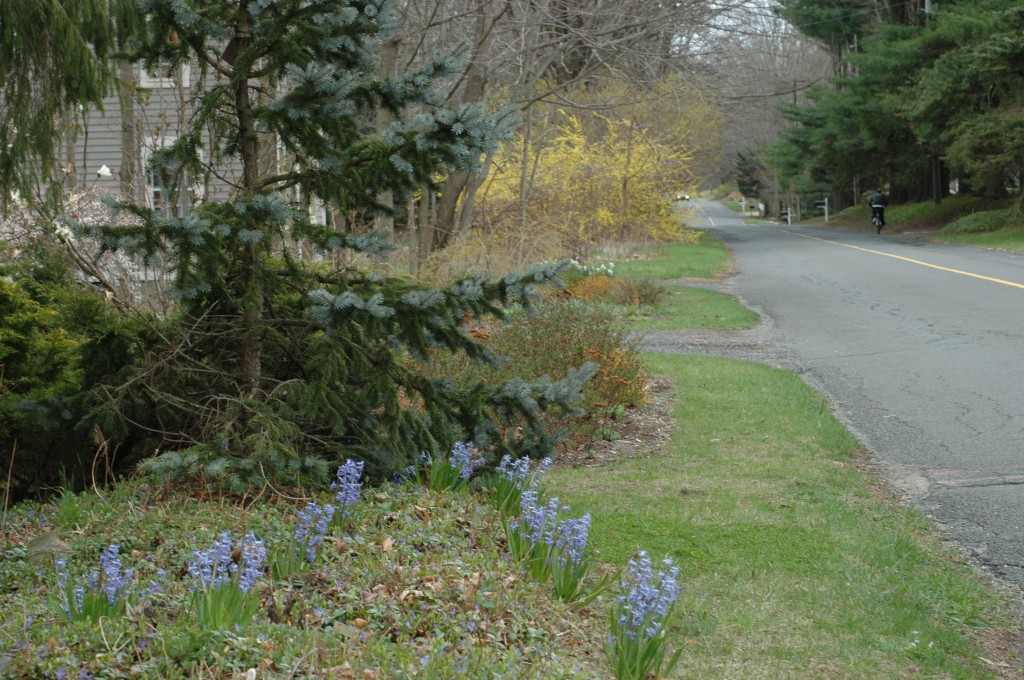 It is visited regularly by sanding trucks during snow storms. Your occasional drunk swerves over it. In other words, this berm boasts all the horrors of every hellstrip and then some. In fact, other hellstrips salute mine for raising the bar — it makes other hellstrips look like heaven. That’s where I stuck these hyacinths — where daffodils die and junipers fear to tread. And they’ve multiplied. No, really. They are blooming out there right now in combination with some thready vinca and they are brilliant.
It is visited regularly by sanding trucks during snow storms. Your occasional drunk swerves over it. In other words, this berm boasts all the horrors of every hellstrip and then some. In fact, other hellstrips salute mine for raising the bar — it makes other hellstrips look like heaven. That’s where I stuck these hyacinths — where daffodils die and junipers fear to tread. And they’ve multiplied. No, really. They are blooming out there right now in combination with some thready vinca and they are brilliant.
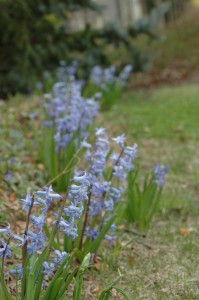 Okay, so their blossom count doesn’t compare to most modern hybrids. And they have shorter stems (which means they don’t flop). But they’re multi-stemmed in the tradition of old-fashioned Roman hyacinths (you know I love old-fashioned). Then there’s the blue — it takes a piece of the sky, or the ocean, or a lap pool and brings it down to earth. [Funny how the light changes the color of these flowers for the camera when I’m not doing a close-up.] Plus, they linger longer in prime condition despite drought, weird unseasonably warm weather, and probably regular applications of dog pee. For that reason (and because I’m not keen on getting run over by a car), I haven’t done conclusive nose testing for fragrance. Brief nostril applications (wearing a neon safety vest) came up with a light aroma — which is a relief compared to the bordello-like scent of its more buxom kin. If anyone else is growing these — fill me in on the fragrance factor from your nose’s perspective.
Okay, so their blossom count doesn’t compare to most modern hybrids. And they have shorter stems (which means they don’t flop). But they’re multi-stemmed in the tradition of old-fashioned Roman hyacinths (you know I love old-fashioned). Then there’s the blue — it takes a piece of the sky, or the ocean, or a lap pool and brings it down to earth. [Funny how the light changes the color of these flowers for the camera when I’m not doing a close-up.] Plus, they linger longer in prime condition despite drought, weird unseasonably warm weather, and probably regular applications of dog pee. For that reason (and because I’m not keen on getting run over by a car), I haven’t done conclusive nose testing for fragrance. Brief nostril applications (wearing a neon safety vest) came up with a light aroma — which is a relief compared to the bordello-like scent of its more buxom kin. If anyone else is growing these — fill me in on the fragrance factor from your nose’s perspective.
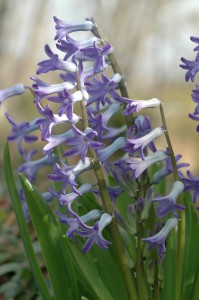 This brings me to a favorite refrain of mine. Don’t you think that we could poke retailers into offering a plant if we demand it loud and clear? If we flex our collective consumer muscle, surely the industry will respond. Right?
This brings me to a favorite refrain of mine. Don’t you think that we could poke retailers into offering a plant if we demand it loud and clear? If we flex our collective consumer muscle, surely the industry will respond. Right?
